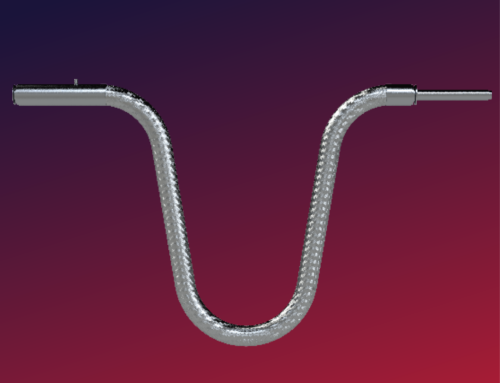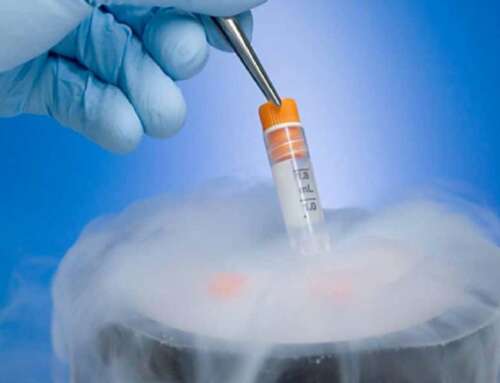Safety is paramount in the industrial sector, especially when dealing with hazardous materials like cryogenic liquids. Cryogenic transfer hoses are crucial in ensuring the safe and efficient transfer of cryogenic liquids like liquid nitrogen (LN2). In this blog post, we will discuss the significance of cryogenic transfer hoses and their contribution to improving industrial safety.
What Are Cryogenic Transfer Hoses?
Cryogenic transfer hoses are specially designed to transfer cryogenic liquids, including liquid oxygen. They are constructed with materials that can withstand the extreme temperatures and pressures associated with cryogenic applications, ensuring these hazardous materials’ safe and efficient transfer.
Key Features of Cryogenic Transfer Hoses
Temperature Resistance
One of the most critical features of cryogenic transfer hoses is their ability to withstand extreme temperatures. These hoses are designed to handle the ultra-low temperatures of cryogenic liquids without becoming brittle or failing, ensuring safe and reliable performance.
Pressure Rating
Cryogenic transfer hoses are also designed to withstand high pressures, ensuring that they can handle the demands of industrial applications where cryogenic liquids are transferred at high flow rates and pressures.
Flexibility
Another essential feature of cryogenic transfer hoses is their flexibility. Their flexibility allows them to be easily maneuvered and connected, even in tight spaces, making them versatile for various operations and original equipment applications.
Importance of Cryogenic Transfer Hoses in Industrial Safety
Preventing Leaks and Spills
Cryogenic transfer hoses are engineered to minimize the risk of leaks and spills during the transfer of cryogens. Their robust construction and tight-sealing connections help prevent the escape of hazardous materials, reducing the risk of environmental contamination and worker exposure.
Ensuring Proper Venting
Proper venting is crucial when transferring cryogenic liquids to prevent the buildup of pressure inside the hose, which can lead to hose failure or rupture. Cryogenic transfer hoses are designed with venting systems that allow for the safe release of excess pressure, ensuring the integrity of the hose and the safety of the operation.
Compatibility with Cryogenic Liquids
Cryogenic transfer hoses are specifically designed to be compatible with cryogenic liquids like liquid nitrogen, ensuring that they can safely and efficiently transfer these hazardous materials without degradation or contamination.
Liquid Nitrogen Hose vs. Nitrogen Transfer Hose
While the terms “liquid nitrogen hose” and “nitrogen transfer hose” are often used interchangeably, there are subtle differences between the two.
Liquid Nitrogen Hose
A liquid nitrogen hose is specifically designed for the transfer of liquid nitrogen and is constructed with materials that can withstand the extreme cold temperatures associated with this cryogenic liquid.
Nitrogen Transfer Hose
A nitrogen transfer hose is more generalized and can be used to transfer various nitrogen-based materials, including gaseous and liquid nitrogen. These hoses are versatile but may not offer the specialized features required for handling ultra-low temperatures.
Choosing the Right Cryogenic Transfer Hose
Selecting the appropriate cryogenic transfer hose is a critical step in ensuring the safety, efficiency, and reliability of your cryogenic applications. With a variety of options available in the market, it can be challenging to determine which hose best suits your specific needs. Here are some key factors to consider when choosing a cryogenic transfer hose:
Type of Cryogenic Liquid Being Transferred
Different cryogenic liquids have varying properties, including temperature requirements and flow characteristics. It’s essential to select a hose that is compatible with the specific cryogenic liquid you are transferring. For instance, a hose designed for liquid nitrogen may not be suitable for transferring other cryogenic liquids like liquid oxygen or helium. Understanding the properties of the cryogenic liquid you are working with will help you select a hose that can safely and efficiently handle the material.
Temperature and Pressure Conditions
Cryogenic applications often involve extreme temperature and pressure conditions. Therefore, it’s crucial to choose a hose that can withstand these harsh environments without compromising performance or safety. Look for hoses with a temperature and pressure rating that meets or exceeds the conditions of your application. The manufacturer typically provides this information and can help you ensure that the hose will perform reliably under the specific conditions of your operation.
Compatibility with Existing Equipment
Compatibilities with existing equipment, such as connectors, fittings, and transfer systems, are another vital consideration when selecting a cryogenic transfer hose. Ensuring that the hose interfaces seamlessly with your existing equipment will help prevent leaks, spills, and other potential hazards. It’s essential to verify that the hose connections are compatible and that adapters or fittings are available if needed.
Consultation with Cryogenic Manufacturers
When in doubt, consulting with cryogenic manufacturers can provide valuable insights and recommendations tailored to your specific needs. Experienced cryogenic manufacturers can offer expert guidance on selecting the right hose based on your application requirements, ensuring optimal performance, safety, and efficiency. They can also provide information on maintenance, installation, and best practices for handling cryogenic transfer hoses to maximize their lifespan and reliability.
Consider Long-Term Costs and Maintenance
While upfront costs are an important consideration, it’s also essential to think about long-term costs and maintenance requirements. Investing in a high-quality cryogenic transfer hose may require a higher initial investment but can result in lower maintenance costs and fewer replacements over time. Additionally, consider the availability of replacement parts and maintenance services when choosing a hose to ensure that you can easily access support when needed.
Conclusion
Cryogenic transfer hoses play a vital role in enhancing industrial safety by facilitating the reliable and efficient transfer of cryogenic liquid. With their temperature resistance, pressure rating, and flexibility, these specialized hoses are designed to withstand the extreme conditions associated with cryogenic applications, minimizing the risk of leaks, spills, and other hazards. Whether you’re looking to transport liquid nitrogen, liquid oxygen, or any other cryogen, choosing the right cryogenic transfer hose can make a significant difference in ensuring the safety and reliability of your operations.
With over 30 years of expertise in cryogenic equipment and vacuum technology, Technifab Products offers comprehensive solutions from design to installation. Our commitment to quality ensures that we meet the stringent standards of organizations like ASME and the Canadian Registration Number (CRN) System. Trust in our experience and dedication to deliver high-quality components tailored to your needs. Let Technifab Products be your partner in developing the perfect solution for your cryogenic requirements.



